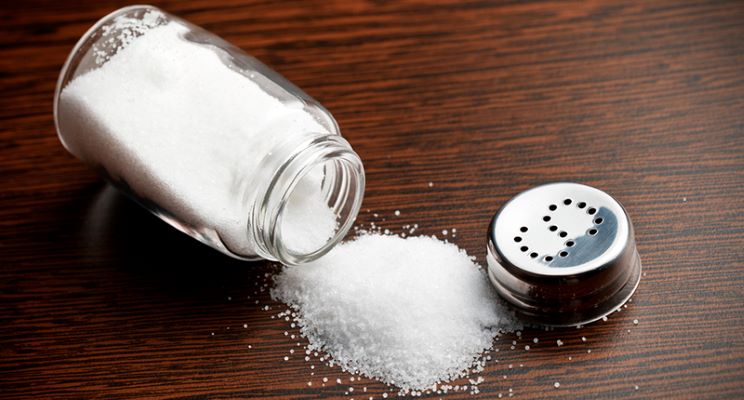Tips to reduce sodium intake, boost flavour in your Indian die

Team L&M
Reducing sodium intake is crucial for heart health and overall wellness, especially in India, where average salt consumption nearly doubles the World Health Organization’s (WHO) recommended limit of 5g per day. High sodium intake is a significant contributor to hypertension, a ‘silent killer’ that affects an estimated 220 million Indians.
As we celebrate National Nutrition Month, as declared by Prime Minister Narendra Modi, this September, it’s crucial to reflect on ways to reduce our sodium intake.
However, cutting salt often feels like cutting flavour, which can make healthy eating difficult to sustain. According to Dr. Anuja Agarwala, Former Senior Dietitian at AIIMS, “There’s a misconception that reducing salt means compromising on taste but understanding flavour science and using the right substitutes can bridge this gap.” One effective yet often misunderstood ingredient is monosodium glutamate (MSG), known for its ability to elicit umami – the savoury taste that enhances satiety. “Umami has shown to influence short-term regulation of food intake, particularly associated with satiety in the context of regulation of protein intake” adds Dr. Eram Rao, Professor, Department of Food Technology at Bhaskaracharya College of Applied Sciences, University of Delhi.
“As per multiple proven scientific studies, MSG contains 70 per cent less sodium than table salt. When used with reduced table salt, the sodium content of the dish can be reduced by up to 40 per cent- all while maintaining the taste and palatability.” adds Dr. Rao.
Here are some insightful tips from Dr. Eram Rao and Dr. Anuja Agarwala on how MSG could be game changer in controlling sodium intake in Indian diets, while still retaining the flavour.
- Use MSG as a Low-Sodium Flavour Booster
MSG, commonly known as the ‘Umami Seasoning,’ is a safe and effective way to enhance the flavour of foods while reducing the high sodium content of table salt. MSG is the combination of sodium and glutamate. Glutamate, or glutamic acid, is synthesized by the human body and is one of the most common amino acids found in many foods, such as tomatoes, mushrooms, broccoli, peas, fish, soy sauce, and aged cheeses. Even human breast milk is highly rich in glutamate.
Despite myths surrounding its safety, extensive research shows that MSG can be an effective tool in sodium reduction owing to its umami eliciting properties. The safety of MSG has been established by numerous public health agencies and organizations worldwide establishing its safety for consumption, including the Joint Expert Committee on Food Additives (JECFA) of the United Nations Food and Agriculture Organization (FAO) and the World Health Organization (WHO), the European Commission’s Scientific Committee for Food (SCF), the Federation of American Societies for Experimental Biology (FASEB), and Food Standards Australia and New Zealand. Further, even in India, as per the regulations, MSG is a permitted food additive and allowed under GMP – Good Manufacturing Practices.
In fact, the use of MSG as a strategy to reduce sodium in food supply has also been acknowledged by countries such as Singapore and the United States (Dietary Reference Intakes for Sodium and Potassium).
- Choose Low-Sodium Salt Substitutes
Salt substitutes that replace sodium with potassium or other minerals can help maintain the salty taste without the high sodium content. Potassium-rich alternatives, like potassium chloride, are particularly effective. “Potassium not only helps in balancing sodium levels but also supports blood pressure management,” notes Dr. Rao. These substitutes are especially useful for those trying to reduce sodium gradually while adapting their taste preferences. Including potassium-rich foods in the diet such as bananas, sweet potatoes, and leafy greens, can also help counteract the effects of sodium.
- Enhance Flavour with Acidic Ingredients
Acidic Ingredients are powerful tool in flavour enhancement that can help you cut back on salt without sacrificing taste. Ingredients like vinegar, lemon juice, lime, and tamarind can brighten dishes and amplify the perception of saltiness, making them ideal for reducing sodium intake. “Acidic ingredients can provide that punch of flavour which tricks our taste buds into feeling satisfied without the need for additional salt,” says Dr. Agarwala. This approach not only reduces sodium but also introduces a variety of flavours to your meals, keeping your palate excited and your diet on track.
- Experiment with Herbs, Spices, and Acids
Herbs, spices, and acids like lemon juice or vinegar can add vibrant flavours to your dishes without adding sodium. “Spices like cumin, paprika, and garlic not only enhance taste but also offer nutritional benefits, including antioxidants and vitamins,” says Dr. Agarwala. Experiment with various seasonings to find combinations that satisfy your palate and support your sodium reduction goals.
Reducing sodium intake doesn’t have to mean sacrificing flavour. With tools like MSG and smart salt substitutes, you can enjoy delicious meals that align with your health goals. As Dr. Agarwala puts it, “Nutrition and flavour can, and should, go hand in hand.” By embracing these strategies, you can maintain a satisfying and heart-healthy diet, proving that the right balance of taste and nutrition is not only possible but deeply rewarding.

